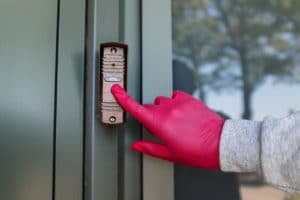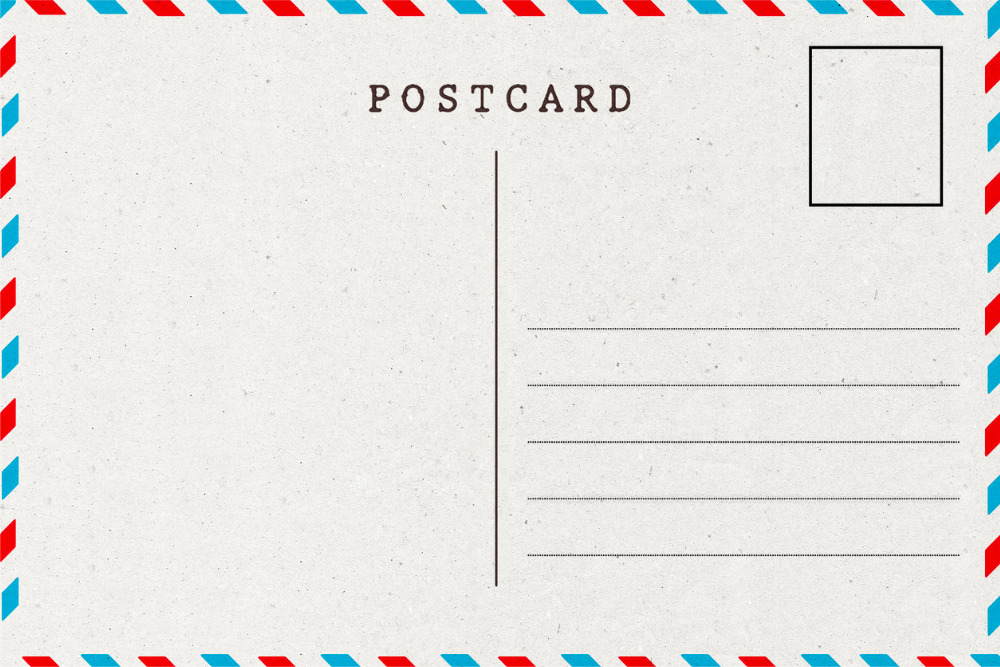In the business world, there are many different marketing approaches that will need to be…

Coping with COVID-19: Business Practices to Prevent Disease Transmission
Earlier this year, the world was caught off-guard by the rapid spread of the novel coronavirus disease, otherwise known as COVID-19. Seven months later, the global economy finds itself in a period of uncertainty, with the long-term consequences of this pandemic still largely unknown. The fact that no one is sure how much longer it will take for healthcare and medical researchers to find a viable vaccine worsens the situation.
Even amid this unpredictability, however, businesses all over the world are working to get back on their feet. Many met the crisis with a work-from-home scheme to continue operations remotely. In industries where this wasn’t possible, businesses implemented health and safety protocols to keep employees safe at work. These strategies are all working, but there’s still a need for better business practices in the time of COVID-19.
One way employers can cope is by educating themselves and their employees. Though companies don’t know a lot about the disease yet, there are tons of legitimate and confirmed information that can help them strategize for the months ahead. More importantly, basic information is available to help prevent further transmission of the disease.
COVID-19: A Brief Primer on the Global Disease
COVID-19 is a type of infectious disease that affects the respiratory system. Research shows that it is primarily spread from person to person through respiratory droplets. When an infected person sneezes, coughs, or talks, minuscule droplets can land on another person’s mouth or nose. These droplets are then inhaled into the lungs, infecting the unsuspecting individual.
This is why the Centers for Disease Control and Prevention (CDC) and other health organizations are advising people to practice social distancing. Social distancing, also referred to as physical distancing, simply encourages everyone to keep a distance of at least six feet from each other. Doing so will help prevent transmission indoor and outdoor without sacrificing face-to-face interactions.
Be Informed: How to Educate Employees on the Situation
News all over the world has undoubtedly kept your employees up to date on the COVID-19 situation, but your new rules and regulations in the workplace will be more successful if you let them understand it fully. Despite the amount of official data on the internet, many individuals remain misinformed about COVID-19, from how it’s transmitted to why social distancing is important. By re-educating your employees, you can implement your office health and safety protocols without problem. Here are things you can do.
- Coordinate with the HR manager and other department heads to come up with a practical communication plan regarding the situation.
- Create the necessary communication channels and collaterals to disseminate information (e.g. business continuity plans) effectively.
- Assign a team that will address questions and concerns regarding the changes. Have them available 24/7 or implement a set time for them to answer these inquiries.
- Encourage employees to approach this team, regardless of the question or concern. Remind them that getting clarification about simple or repetitive questions is better than falling into false assumptions.
- Place several copies of your new health and safety guidelines throughout the workplace—or a digital copy in your company’s online workspace. Hire printing services to produce posters and other types of signage to support your communications plan.
For certain industries, it’s impossible to implement a work-from-home scheme. By adopting the necessary precautionary measures, you can keep your employees, customers, and the rest of the community safe and healthy during these times.
Prevention is the Key: How to Keep the Workplace Safe and Healthy
As the number of COVID-19 cases increased at the beginning of the year, several countries around the world decided to go on lockdown. This decision was made to reduce the number of people interacting outside. But the lockdown didn’t stop businesses from continuing with their operations. Several businesses rose to the challenge and implemented crisis management strategies to remain afloat.
Now, as more cities continue to ease up on their lockdown protocols, a new challenge has emerged. With lockdowns lifted, businesses have started easing employees back into their offices. More people are venturing out of their homes and beginning to live life in a pre-lockdown manner. Businesses are encouraged to adopt and implement health and safety protocols to limit contamination and transmission, especially if their office receives heavy foot traffic on regular business days.
Provide signs and wayfinders.
Social distancing in the workplace can be difficult with several people stuck in a limited space for most of the day. Address this risk hazard with the necessary solutions to prevent transmissions in the workplace.
- Put up wayfinders throughout the workplace to control the flow of foot traffic.
- Place markers on the floor to indicate proper distancing of employees in common areas, such as meeting rooms, pantries, and elevator foyers.
- Provide signage or posters with detailed instructions on how to use communal spaces. Remind employees to maintain the one-seat-apart position in any room or workstation. Inform them how to disinfect an area properly upon entering and leaving it.
Improve workplace cleanliness and hygiene.
Although COVID-19 is primarily spread through respiratory droplets, healthcare professionals advise to be careful of touching shared surfaces and objects. If someone touches their eyes, nose, or mouth after touching a contaminated area, they are likely to get infected.
- Create new cleanliness and hygiene guidelines for the workplace.
- Make cleaning and disinfecting a regular practice throughout the workday.
- Place disinfectant wipes at areas with shared surfaces (e.g. meeting rooms) and objects (e.g. telephones and printers).
Encourage regular and thorough handwashing. 
The hands are considered the fastest way to transmit the disease. When someone sneezes or coughs into their hand, they cover it in respiratory droplets. Even after wiping their hand with a tissue, they can still contaminate surfaces and objects when they touch them.
- Place hand sanitizer dispensers in prominent areas throughout the workplace. Keep these dispensers regularly filled with sanitizer that has at least 60% alcohol.
- Keep bathrooms well-stocked with anti-bacterial liquid hand soap. Additionally, make sure there is a steady supply of tissue paper to keep employees from wiping their wet hands on their clothes.
- Put up posters that illustrate the proper hand-washing technique. Include reminders on why handwashing is essential in preventing transmissions.
Promote good respiratory hygiene.
The nature of transmission of COVID-19 has put some people on edge. The mere sound of someone coughing or sneezing in their vicinity causes some people to turn their heads in apprehension, cover their mouths and noses, or move away from the sneezer.
Since most workplaces require employees to stay relatively close to each other, this can cause problems in the long run.
- Remind employees to cover their noses and mouths when sneezing and coughing.
- Keep boxes of tissue available throughout the workplace.
- Provide face masks, particularly disposable surgical face masks, for those without cloth face coverings.
Your employees’ health and safety are essential in the continued success of your business. By practicing the necessary precautions and implementing safety measures, you create a work environment that protects them from this disease.
Stop, Look, and Read: The Importance of Signage during a Pandemic
The global pandemic has created new behavioral norms. But this doesn’t mean people are aware of these changes or, if they are, they don’t know how to practice them in their own lives. This is why different types of signage are essential in shared spaces, especially in your workplace.
Signage serves to provide valuable information to your employees. When they go back to the workplace, these signs educate and remind them of the new rules and practices. Here are suggestions on how to use signage to improve health and safety in your workplace.
Outdoor Signs
- Advise employees to keep their face mask on as they enter the building.
- Inform employees that their temperature will be checked before they are allowed into the building.
- Remind employees to practice social distancing once they are inside the building.
Indoor Signs
- Remind employees to sit a chair apart from each other in meeting rooms and other communal spaces. Place small stickers on chairs to discourage employees from sitting on the empty chairs.
- Teach employees proper handwashing practices by posting a step-by-step guide on bathroom mirrors. Use iconography to make the poster easier to digest.
- Using wayfinders, lead employees toward the direction of hand sanitizer stations and office cleaning tools. Put these wayfinders throughout the workplace so it would be impossible to miss.
Informational Signs
- Pair your “back to work” communications campaign with new signage for better follow-through.
- Use these new signs to remind employees why the additional precaution is necessary.
- Include inspirational or encouraging words in these informational signs to add a human element to them.
Ensuring the health and safety of your organization lies in information. When employees are well-informed and understand the situation, they are encouraged to follow the new protocols. Additionally, they can take a proactive approach to the new normal as they return to the workplace.
Worst-Case Scenario: How to Deal with an Outbreak
Even with strict protocols in place, COVID-19 can enter your workplace undetected. It may be through an employee who unknowingly interacted with a COVID-positive person. It can be through a courier who delivered office supplies. It may also occur if the community surrounding your workplace has an outbreak. No matter the situation or cause, you should have a plan in place to deal with the consequences.
Develop a plan for a workplace outbreak.

An outbreak in your workplace is possible if your employees still conduct meetings with third parties or do business-related travels. Don’t wait for someone to get sick to make a plan. Preparing one for the eventuality of an outbreak is your best move to prevent the rise of transmission.
- Work with managers and department heads to develop a system appropriate for their personnel and the organization as a whole.
- Set up an identification system to determine who is at the highest risk of contracting the disease. This should include employees who are traveling for work, meeting with third party individuals and organizations physically, and those who have preexisting conditions that make them prone to infection.
- Prevent stigma and discrimination in the workplace by practicing discretion. Set up a reporting system, so employees who suspect they’re sick have a way to inform key people without causing a panic.
- Create guidelines on how to proceed when an employee suspected of having COVID-19 is in the workplace.
- If the discovery about the employee’s health condition happened during work hours in the workplace, launch a plan to separate them from other employees. It will give your team enough time to do what is necessary, such as contacting the appropriate health authorities and guiding the other employees what to do.
- If the discovery of symptoms was made pre- or post-work hours, create an information dissemination plan for the rest of the organization. Make sure the employee suspected of having COVID-19 knows where they can get tested and that the company has a support system in place for them.
Develop a plan for a community outbreak.
A community outbreak around your office area is a big risk of going back to work. Although you have full control over what happens in your organization, you have little control over the health and safety protocols of the surrounding areas. Protect yourself and your employees by planning for outbreaks outside of your jurisdiction.
- Develop a business continuity plan for an outbreak directly outside of your workplace. This should include a communications plan that will immediately inform employees of the situation.
- Consider halting business operations (if you can) for two weeks after discovering the outbreak. Use this time to go into self-quarantine and advise employees to do the same.
- Remind employees to be mindful of their health. With a community outbreak, anyone in your organization could’ve have been infected before the discovery.
- If it’s not possible to stop business operations, list down different options to continue work without exposing your employees to the virus.
- Restructure work schedules to limit the number of employees entering and leaving the workplace. Have teams work on a rotational basis to keep them from crowding the workplace.
- Determine which teams can work remotely. Provide them with the necessary hardware (e.g., laptops or desktops) to carry out their tasks wherever they are isolating.
Develop a plan in case an employee gets COVID-19.
In the event one of your employees contracts COVID-19, you will be one of the people they’ll look to for support. As their employer, you need to reassure them that their condition will not make them dispensable in the organization.
- Coordinate with the HR manager for a contingency plan for employees who contract COVID-19.
- Identify and assign who will manage their workload as they get the necessary medical treatment.
- Determine how their quarantine and possible hospitalization fits in their allowed absences.
- Develop a plan on how to reintegrate them into the organization once they fully recover from the disease.
- Set up a communications channel between the affected employee and the necessary people from the organization. Include the HR manager, their direct supervisor, and the employee/s taking up their responsibilities while they are in treatment.
Preparation is the key to preventing transmissions in your workplace or responding quickly to emergencies. By having the appropriate contingency plans in place, you leave little room for mistakes.
Get Help: Work with the Right People
Making your workplace safe for your employees, customers, and other individuals will take time and effort. By working with the right people, you can streamline the process. Action Mailing & Printing Solutions has over three decades of experience in creating customized signage for commercial purposes. We have the equipment and resources to provide you with the necessary posters, wayfinders, and other types of signage you need to keep your company informed and prevent transmission in your workplace.
Get in touch with the team to find out more.




Great article, thanks for sharing useful content. Regards, David the author of the blog: https://deteced.com/
Cheers
สูตรปั่นบาคาร่าออนไลน์ ปั่นบาคาร่า ให้ได้เงิน ทำได้ง่ายๆ สูตรปั่นบาคาร่าออนไลน์ฟรี เเจกสูตรในการทำเงินบาคาร่าให้เฉียบคมมากยิ่งขึ้น รับประกันผลกำไรอย่างแน่นอน ทำได้ด้วยตัวเอง
ผู้ให้บริการ เกมสล็อตอันดับ 1 โปรโมชั่น ตัวแม่ตัวมัม น้องใหม่ล่าสุด นาทีนี้ต้องยกให้ pgslot.mx เท่านั้น เว็บของเราเป็นเว็บที่รวบรวมเกมสล็อตไว้ครบวงจร สมัครสมาชิกกับเราวันนี้ รับเครดิตฟรี 100 รับ 200 ทีนี้ก็ว้าวุ่นกันเลยทีเดียว อีกทั้งเรายังแจก สูตรสล็อต pg แบบใช้งานได้จริง ไม่มีโกง บอกหมดเปลือกกันเลย
In the wake of the COVID-19 pandemic, businesses have been forced to confront a myriad of challenges. Ryan Waggener’s blog post sheds light on the proactive measures taken by companies worldwide. While the world waits for a vaccine, businesses are finding innovative ways to navigate these uncertain waters. Some have embraced remote work as the new normal, while others have implemented stringent health and safety measures to safeguard their employees. However, it’s crucial for employers to prioritize education and awareness. Despite the ongoing research, there is a wealth of credible information available to help businesses formulate strategies to prevent the further spread of the virus.
VIP bodyguard services in New York offer top-notch protection for high-profile individuals and celebrities in the bustling metropolis. These services are characterized by a combination of extensive training, discretion, and a deep understanding of the unique security challenges faced in a city like New York. With their expertise, VIP bodyguards provide peace of mind and ensure the safety and privacy of their clients in the heart of the city that never sleeps.
This article is very good. It’s very useful. I will continue to follow
บาคาร่าออนไลน์
Hurray, this is just the right information that I needed. You make me want to learn more! Stop by my page Webemail24 about Website Design.
Nice post! You have written useful and practical information. Take a look at my web blog Seoranko I’m sure you’ll find supplementry information about Senior Health you can gain new insights from.
Nice post! You have written useful and practical information. Take a look at my web blog Articlecity I’m sure you’ll find supplementry information about Woodworking you can gain new insights from.
Impressive posts! My blog Articlehome about Flooring also has a lot of exclusive content I created myself, I am sure you won’t leave empty-handed if you drop by my page.
You absolutely know how to keep your readers interest with your witty thoughts on that topic. I was looking for additional resources, and I am glad I came across your site. Feel free to check my website Articleworld about Social Media Marketing.
Sharing is caring the say, and you’ve done a fantastic job in sharing your knowledge on your blog. It would be great if you check out my page, too, at Article Sphere about SEO.